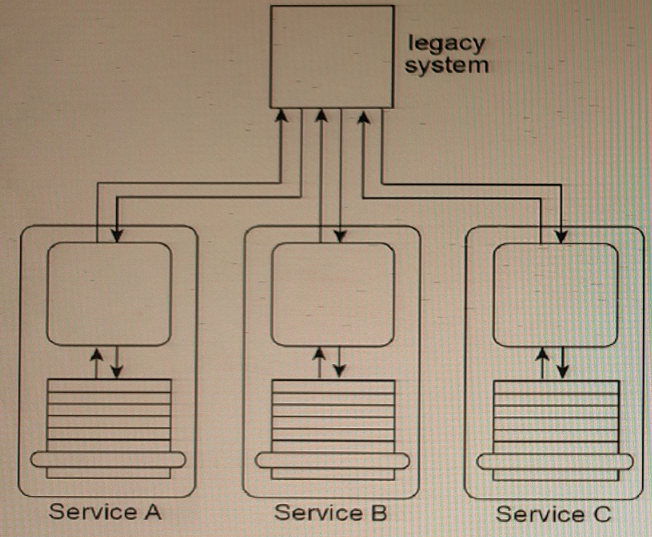Arcitura Education Exam S90.08B Topic 1 Question 1 Discussion
Topic #: 1
Refer to Exhibit.

Service A, Service B, and Service C are entity services, each designed to access the same shared legacy system. Service A manages order entities, Service B manages invoice entities, and Service C manages customer entities. Service A, Service B, and Service C are REST services and are frequently reused by different service compositions. The legacy system uses a proprietary file format that Services A, B, and C need to convert to and from.
You are told that compositions involving Service A, Service B, and Service C are unnecessarily complicated due to the fact that order, invoice, and customer entitles are all related to each other. For example, an order has a customer, an invoice has an order, and so on. This results In calls to multiple services to reconstruct a complete order document. You are asked to architect a solution that will simplify the composition logic by minimizing the number of services required to support simple business functions like order management or bill payment. Additionally, you are asked to reduce the amount of redundant data transformation logic that is found in Services A, B, and C.
How will you accomplish these goals?
The Lightweight Endpoint pattern can be applied to establish lightweight capabilities that can return related entity data directly to service consumers, simplifying the composition logic by minimizing the number of services required to support simple business functions like order management or bill payment. This approach provides a standardized and simplified interface for the legacy system, reducing the complexity of the integration process with the entity services, and enabling them to focus on their core functionality.
Currently there are no comments in this discussion, be the first to comment!